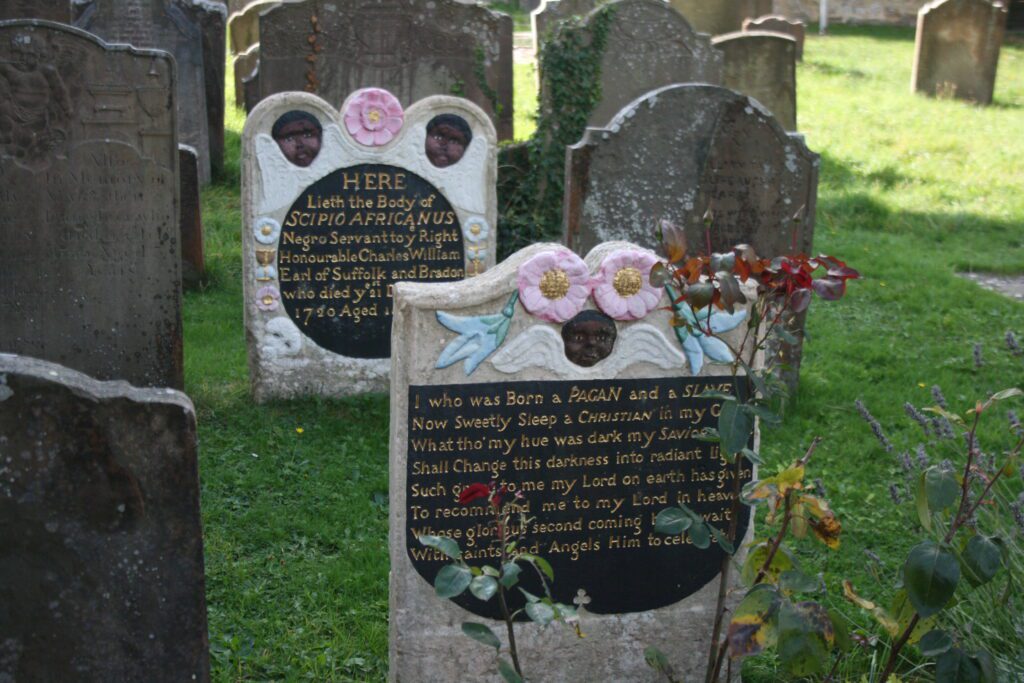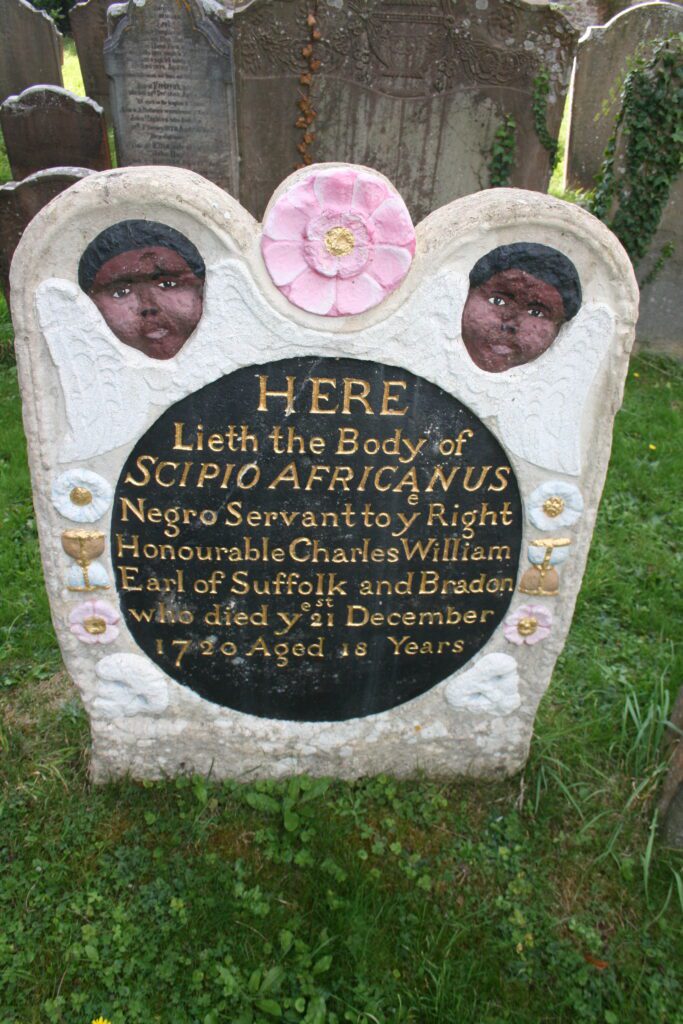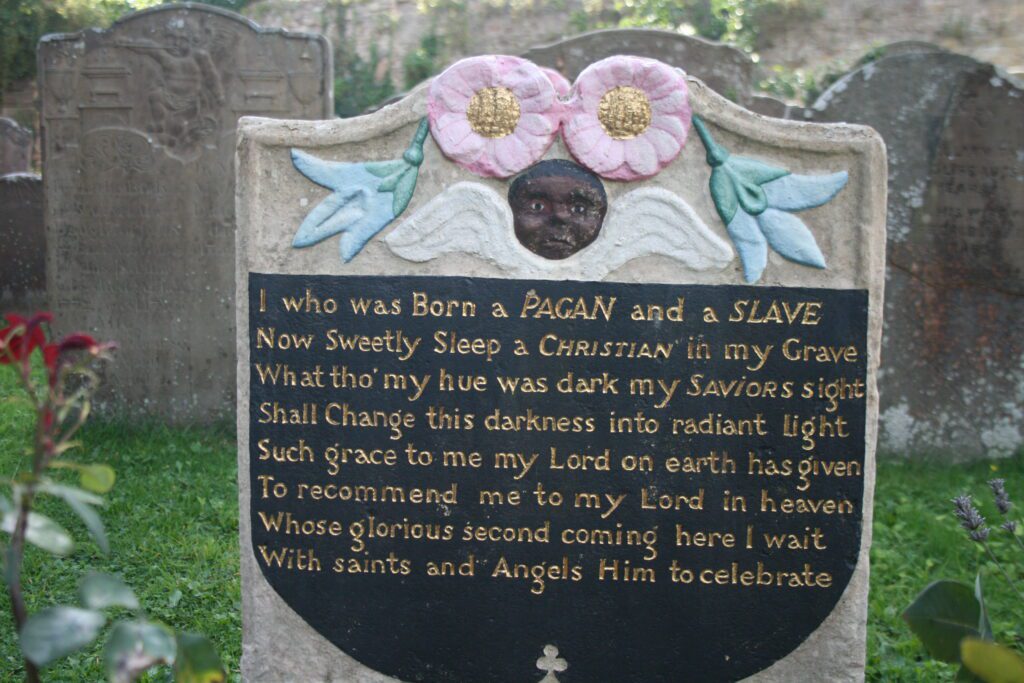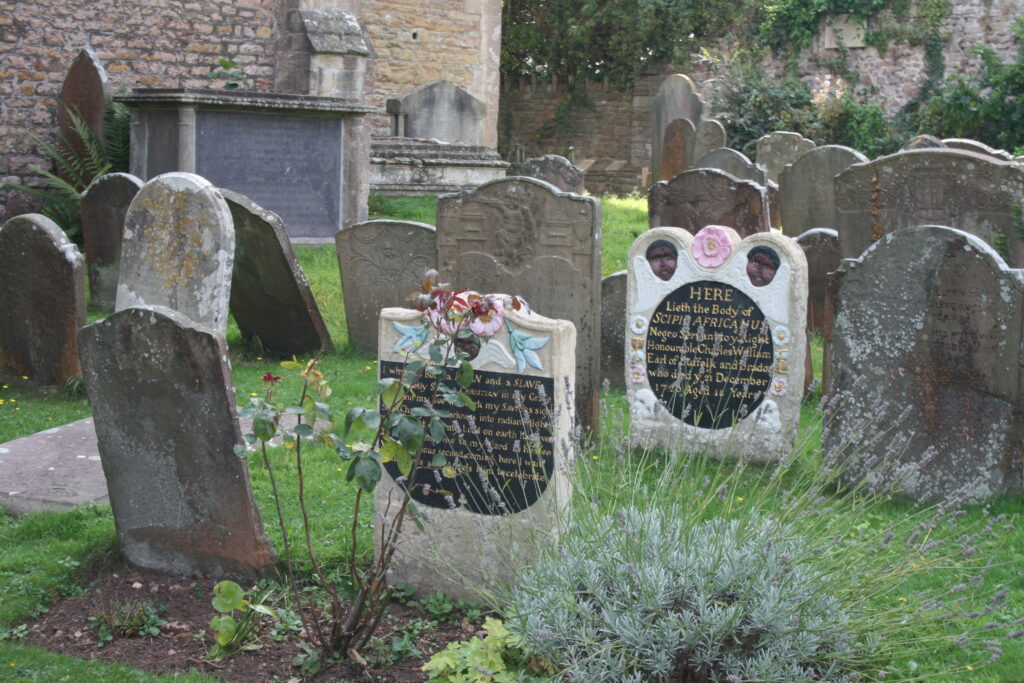If I should die, think only this of me:
That there’s a corner of some foreign field
That is for ever England.
Rupert Brooke’s sonnet, written just as the First World War was about to begin, is as much a love poem to England as a war poem: “her flowers to love, her ways to roam…washed by the rivers, blest by the suns of home.” It is a romanticised, idyllic England, and its allure is so strong that the foreign land in which the protagonist is buried will become England.
A few months after writing the poem, on a troopship bound for Gallipoli, Rupert Brooke died of blood poisoning from an infected mosquito bite. He was buried on the Greek island of Skyros.
I have not visited his grave (yet) but I know many graves which form small enclaves in England’s foreign fields.
Scipio Africanus (1702-1720) was an enslaved boy from West Africa named by his “owner”, the Seventh Earl of Suffolk, after the Roman General who conquered Carthage in the Second Punic War. Suffolk lived at the Great House at Blaise in Bristol and the boy, who died at the age of eighteen, is buried in St. Mary’s churchyard in the suburb of Henbury.
The two stones which mark his grave stand out from their subdued grey neighbours having first been painted in the twentieth century. The brighter colours to which they were later treated in 2006 proved controversial, but I am captivated by the black cherubs, startlingly pink and blue flowers, white skulls, and gold lettering.

I am more disturbed by the description of the young man as a “negro” on the headstone,

and the patronising wording on the footstone referring to his birth as “a Pagan and a Slave.” I choke on the condescension and bigotry encapsulated in the lines:
What tho’ my hue was dark my Saviors sight
Shall change this darkness into radiant light
and fulminate against the arrogance and conceit inherent in the suggestion that it is by the Duke’s good recommendation that the former slave will enter heaven:
Such grace to me my Lord on earth has given
To recommend me to my Lord in heaven.

Despite the distasteful inscription however I am not alone in being charmed by this burst of colour in the churchyard, for the grave is popular receiving many visitors who frequently leave flowers. The headstone was vandalised in June 2020 apparently in retaliation for the damage caused to the statue of Edward Colston in central Bristol. During a Black Lives Matter protest the statue of Colston, merchant, slave trader, and philanthropist, had been toppled, defaced, and thrown into Bristol harbour. Following a public survey, the graffitied Colston statue is now on display in the M Shed museum in Bristol, meanwhile a funding campaign raised over £6,000 for the repair and restoration of the gravestone.
Scipio Africanus rests again in his foreign field, an exuberant little plot that is forever Africa.

